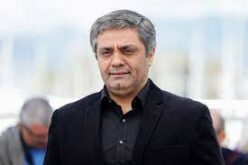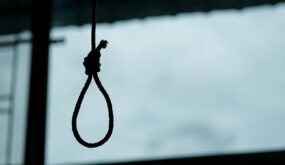Radiofarda – Defending his performance in the coronavirus crisis Iran’s Health Minister Saeed Namaki has praised the “management pattern” of the disease in the country as “unique” and “unmatched” in the world.
There are also reports on the possibility of reopening Shiite holy shrines in the cities of Mashhad, Qom and Shiraz.
As the month of fasting, Ramadan (April 23) approaches, religious activities will be resumed as well, local news outlets say.
Meanwhile, on Friday, April 17, Namaki dismissed a former Deputy President’s vitriolic comments on the mismanagement of the deadly virus outbreak in the country.
The performance of the Ministry of Health in fighting the epidemic has been entirely based on “scientific methods”, Namaki insisted.
Critics have harshly criticized the performance of the Islamic Republic in handling the epidemic. Many believe that the government knew arrival of the virus in Iran and waited weeks to announce the outbreak, but even then failed to quarantine the religious city of Qom, the epicenter of the outbreak.
The government’s handling of the crisis was also marked by confusion, contradictory announcements and the lack of a clear strategy.SEE ALSO:Iran’s Covid-19 Cases May Be As High As 600,000: Parliament’s Research Arm
Earlier, former Special Assistant to the President for Economic affairs (2017-18), Masoud Nili, had lambasted Namaki and his team for their “hasty decisions”.
In a note for Donya-e Eqtesad (World of Economy) daily on Thursday, Nili had blasted the National Headquarters for Combating Coronavirus for hastily moving towards normalization and reopening provinces still on the country’s red alert list.
More than half of the country’s population live in these provinces, yet the Ministry of Health has decided to “normalize” them, Masoud Nili wrote.
Firing back on the same daily, Namaki responded that since January when the coronavirus outbreak was declared in China, “I requested holding an ’emergency meeting’ to stop all flights to and from China.”
However, Namaki disregarded the fact that the outbreak was first identified in Wuhan in December 2019.
Eventually, under a barrage of criticism, President Hassan Rouhani’s administration banned flights between Iran and China on January 31, but even after that flights continued for at least three weeks, amounting to at least 55 flights.
Furthermore, Namaki has described the “scientific management” of the deadly virus as “successful”, adding, “We will soon publicly expand on the management pattern of the COVID-19 as a successful national model that probably is unique to our beloved homeland.”

In the meantime, religious authorities in Iran have announced the possibility of reopening shrines and other religious sites across the country.
Ahmad Marvi, who is responsible for the guardianship of Shiite sites in the city of Mashhad, northeast Iran, declared on Friday that a guideline has been prepared for reopening the sites.
In a note on Instagram Marvi said the guideline was based on hygienic requirements and would soon pave the way for reopening religious sites in Jaamkaran, Mashhad and Qom.
Following the coronavirus outbreak in Iran, clerics and religious authorities strongly opposed the temporary closure of religious sites, including shrines.
The eventual closurea triggered a series of unending heated debates and conflicts between health experts and religious authorities.
Moreover, President, Hassan Rouhani has called on the Minister of Health to “form a team” to look into the possibility of implementing programs and holding worship services during the holy month of Ramadan in the provinces that have a “stable condition”, amid the outbreak of the novel coronavirus and its related deadly disease, COVID-19.
 Shabtabnews In this dark night, I have lost my way – Arise from a corner, oh you the star of guidance.
Shabtabnews In this dark night, I have lost my way – Arise from a corner, oh you the star of guidance.


